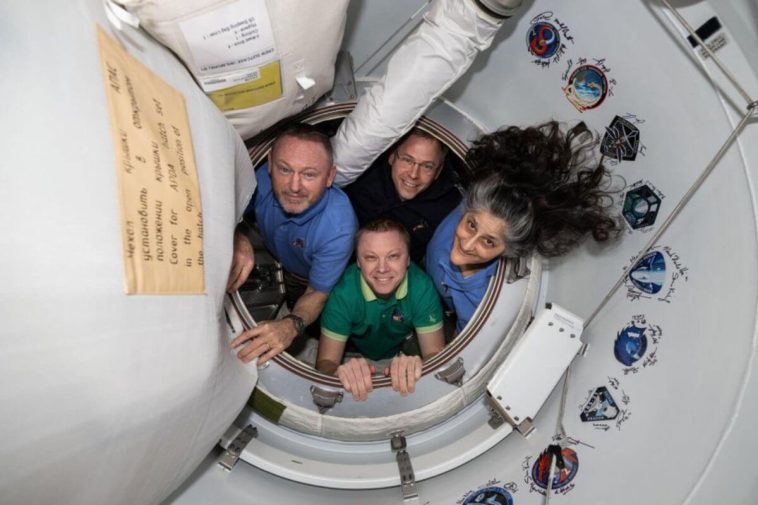NASA astronauts Sunita Williams and Butch Wilmore are finally coming home after an unexpectedly prolonged nine-month stay aboard the International Space Station (ISS). Their return, scheduled for Wednesday morning, March 19, 2025, is being met with a mix of relief, excitement, and admiration for their resilience. Originally planned as a short mission, their journey turned into an extended test of endurance, patience, and adaptability—one that has captured the world’s attention.
A Mission That Took an Unexpected Turn
When Williams and Wilmore set off on June 5, 2024, aboard Boeing’s Starliner, they were expecting to stay in space for just a week. The goal was to test the spacecraft’s capabilities, ensuring its reliability for future missions. However, things didn’t go as planned. Technical glitches, including helium leaks and propulsion system malfunctions, made the Starliner unsafe for their return. With no immediate fix, NASA made the tough call to keep them aboard the ISS until a safe alternative was arranged.
What was supposed to be a quick check turned into a full-fledged ISS mission, with both astronauts seamlessly stepping in to contribute to ongoing research and daily operations. Over the months, they became an integral part of the station’s crew, conducting more than 150 experiments and adapting to a life far away from Earth longer than they had ever imagined.
How NASA Prepared for Their Homecoming
After months of careful planning, NASA and SpaceX have orchestrated a meticulous return strategy. Williams and Wilmore will board SpaceX’s Crew Dragon capsule, a reliable spacecraft with a proven track record. The capsule is set to undock from the ISS in the early hours of Tuesday, March 18, and splash down off the coast of Florida later that evening.
NASA’s ground teams are monitoring weather conditions, ensuring the right temperature and sea conditions for a smooth landing. Recovery crews are stationed near the designated splashdown site, ready to assist the astronauts the moment they touch down. The agency is also prepared for any post-landing health complications, as returning from space after such an extended period can be physically challenging.
What Nine Months in Space Feels Like
For Williams and Wilmore, this mission became more than just a test flight—it turned into a testament to human endurance. Space can be an isolating experience, and spending nine months in microgravity takes a toll on the body. Astronauts returning from long missions often experience muscle weakness, balance issues, and even difficulty standing. NASA’s medical team will be on standby to assist them as they readjust to gravity.
Despite the physical strain, there’s an emotional side to this return, too. Being away from family, missing everyday joys like fresh food, a warm shower, or simply feeling Earth’s gravity—these are things that astronauts often long for. Williams has expressed that while she’s eager to come home, there will always be a part of her that will miss the unique experience of living in space.
A Mission That Will Be Remembered
As they prepare to set foot on solid ground again, their journey serves as a reminder of the unpredictability of space exploration. Every mission, whether smooth or challenging, pushes the boundaries of what humans are capable of. Williams and Wilmore didn’t just complete their mission—they proved that even in the face of the unexpected, astronauts can adapt, thrive, and contribute to science in ways that inspire generations.
As they descend through Earth’s atmosphere, one thing is certain: this return is not just about landing safely. It’s about celebrating the spirit of exploration, the determination to overcome challenges, and the excitement of coming home. Welcome back, Sunita Williams and Butch Wilmore—you’ve earned it!





